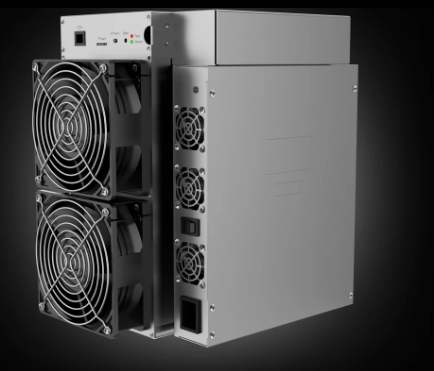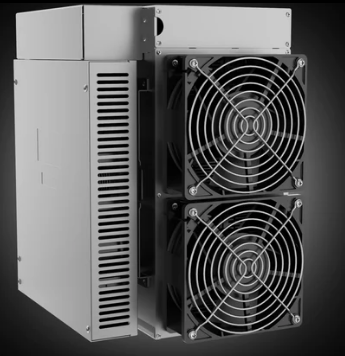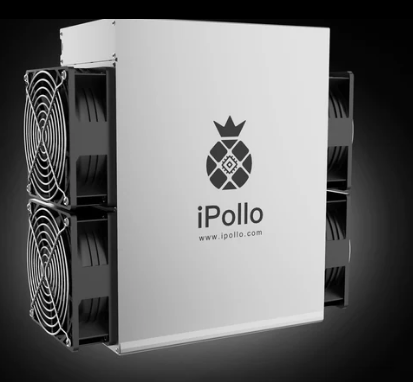How to overclock iPollo B1L for better performance?
How to Overclock iPollo B1L for Better Performance?
The iPollo B1L has quickly become a standout choice in the Bitcoin mining hardware market, offering a combination of performance, efficiency, and reliability that appeals to both small-scale miners and large-scale mining operations. With a hashrate of 58 TH/s and a power consumption of 3000W (±10%), the B1L strikes a balance between power efficiency and computational capability. However, for those looking to maximize their mining returns, overclocking the iPollo B1L can unlock even greater performance. In this article, we’ll explore the process of overclocking the iPollo B1L, the benefits it can bring, and the considerations miners should keep in mind to ensure optimal results.
Understanding Overclocking in Cryptocurrency Mining
Overclocking refers to the process of increasing the operating speed of a piece of hardware beyond its factory-set specifications. In the context of ASIC miners like the iPollo B1L, this involves pushing the device to achieve a higher hashrate than its default setting. While overclocking can lead to increased mining performance, it also comes with trade-offs, such as higher power consumption and potentially increased heat generation.
For miners, the decision to overclock often hinges on the balance between additional computational power and the associated costs. When done correctly, overclocking can enhance profitability by enabling the miner to solve more blocks in less time. However, it requires careful management to avoid hardware damage or excessive energy costs.

Why Overclock the iPollo B1L?
The iPollo B1L is already an efficient and powerful miner, but overclocking can provide several advantages:
- Increased Hashrate: By overclocking, miners can push the B1L beyond its default 58 TH/s, potentially achieving higher computational output and increasing the chances of solving blocks faster.
- Improved Profitability: A higher hashrate directly translates to more mined Bitcoin over time, which can significantly boost revenue, especially during periods of high network difficulty.
- Flexibility in Mining Operations: Overclocking allows miners to adapt their operations to changing network conditions, such as fluctuations in Bitcoin’s price or difficulty levels.
However, it’s important to note that overclocking also increases power consumption and heat output. Miners must ensure they have adequate cooling and power infrastructure to support the higher demands of an overclocked B1L.
Step-by-Step Guide to Overclocking the iPollo B1L
Overclocking the iPollo B1L requires a systematic approach to ensure stability and avoid potential damage. Here’s a step-by-step guide:
1. Prepare Your Setup
Before attempting to overclock, ensure your mining environment is optimized:
- Power Supply: Verify that your power supply can handle the increased load. The B1L already operates at 3000W, so overclocking may require additional capacity.
- Cooling System: Overclocking increases heat output, so ensure adequate cooling through industrial-grade fans or immersion cooling systems.
- Monitoring Tools: Use mining monitoring software to track temperature, hashrate, and power consumption in real-time.
2. Access the Miner’s Interface
The iPollo B1L comes with a user-friendly interface accessible via its IP address. Connect to the miner using a web browser and log in with your credentials.

3. Adjust Frequency and Voltage
Overclocking typically involves increasing the frequency at which the ASIC chips operate. However, higher frequency often requires increased voltage to maintain stability. Locate the frequency and voltage settings in the miner’s interface and make incremental adjustments:
- Start by increasing the frequency by small increments (e.g., 5-10 MHz).
- Monitor the hashrate and stability after each adjustment.
- If the miner becomes unstable, increase the voltage slightly to compensate.
4. Monitor Performance
After each adjustment, closely monitor the miner’s performance:
- Hashrate: Ensure the hashrate increases as expected without instability.
- Temperature: Keep temperatures within safe limits (typically below 80°C for most ASIC miners).
- Power Consumption: Track power usage to ensure it remains within your infrastructure’s capacity.
5. Test Stability
Run the overclocked settings for an extended period (24-48 hours) to test stability. Look for signs of hardware stress, such as frequent restarts or errors in the mining logs.
6. Optimize Settings
Once you’ve achieved a stable overclock, fine-tune the settings to maximize efficiency. Balance the increased hashrate with manageable power consumption and heat output.
Key Considerations for Overclocking the iPollo B1L
While overclocking can enhance performance, it’s essential to approach it with caution. Here are some critical factors to consider:
- Hardware Limits: Every ASIC miner has physical limits. Pushing the B1L too far can lead to permanent damage. Always stay within recommended thresholds.
- Cooling Requirements: Overclocking generates additional heat. Ensure your cooling system can handle the increased thermal load to prevent overheating.
- Power Costs: Higher power consumption means increased operational costs. Calculate whether the additional revenue from overclocking outweighs the higher electricity bills.
- Warranty Implications: Overclocking may void the manufacturer’s warranty. Consider this before proceeding, especially if your miner is still under warranty.
- Network Difficulty: Overclocking is most beneficial when Bitcoin’s network difficulty is high. During periods of low difficulty, the additional hashrate may not translate to significantly higher profits.
Real-World Applications and Benefits
For mining operators, overclocking the iPollo B1L can be a game-changer. Here are some real-world scenarios where overclocking delivers tangible benefits:

- High Network Difficulty Periods: When Bitcoin’s network difficulty spikes, overclocking can help maintain profitability by increasing computational power.
- Short-Term Mining Campaigns: For miners targeting specific events or market conditions, overclocking can provide a temporary boost in hashrate to maximize returns.
- Operational Flexibility: Overclocking allows miners to adapt to changing market conditions, such as fluctuations in Bitcoin’s price or electricity costs.
Conclusion
The iPollo B1L is a powerful and efficient ASIC miner that offers excellent performance straight out of the box. However, for miners looking to squeeze every ounce of potential from their hardware, overclocking presents an opportunity to achieve even greater results. By following a systematic approach and carefully managing the associated risks, miners can unlock higher hashrates, improve profitability, and adapt their operations to meet the demands of the ever-evolving cryptocurrency market.

Remember, overclocking is not without its challenges. Miners must balance increased performance with the costs of higher power consumption and heat generation. With proper planning and execution, overclocking the iPollo B1L can be a valuable strategy for optimizing Bitcoin mining operations and staying competitive in this dynamic industry.